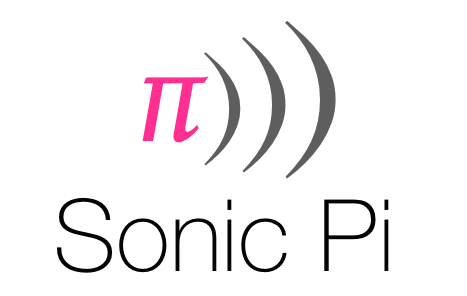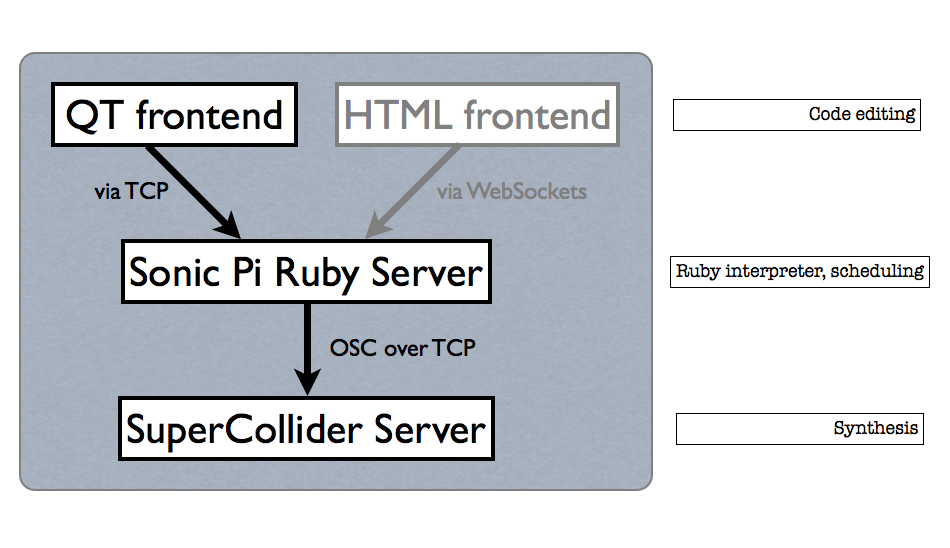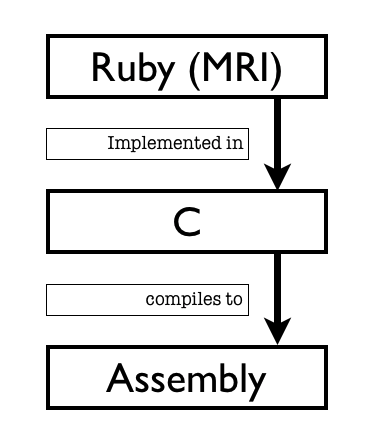Coding music
As easy as Pi
Presented by Xavier Riley / @xavriley
@xavriley
works at: @opencorporates
slides: sonic-pi-talk.herokuapp.com
github: github.com/xavriley
What's all this about?

A new cross-platform music programming environment that uses the Ruby programming language. It aims to teach concepts of computer science through creating music.
Where will it work?
It currently runs on Mac OSX (back to 10.6) and linux and is distributed with the Raspberry Pi.
Windows support is planned - volunteers wanted!
Download the latest version here: http://sonic-pi.net/
Who is this for?


Please ask questions!
Overview
- Overture: a love story in 3 acts
- Making music: A quick tutorial
- Under the hood: How it works
- Coda: so what?
Overture: a love story in 3 acts
My personal coding journey
Act 1: Interactive Music with Creative Computing
Act 2: Becoming a professional programmer
Act 3: Coming back to music
Making Music
The four esses
- sampling
- synthesis
- effects
- sequencing
- (and for bonus points)
- stochasticism
- Algorave
But first... Using the built in tutorial and docs
Since I proposed this talk, Sonic Pi has shipped with great documentation and an extensive tutorial full of examples. You should check that out first - what follows is a quick run through.
Sampling
sample :perc_bell
sleep 5
sample :drum_cymbal_open, rate: -1
sleep 5
sample :drum_cymbal_open, rate: 0.5
sleep 5
sample :loop_amen, start: 0.5, finish: 1
sleep 5
3.times do
sample :loop_amen
sleep(sample_duration(:loop_amen))
end
Sampling (advanced)
use_debug false
steps = (0..1).step(1/16.0).each_cons(2).to_a
steps.shuffle! # randomise the order
puts steps.inspect
4.times do
steps.each do |s, f|
sample :loop_amen, start: s, finish: f
sleep(sample_duration(:loop_amen)/16.0)
end
end
Sampling
- you can load your own samples too
- any .WAV file can be loaded
Synthesis
play :c4
sleep 3
play :c4, sustain: 2
sleep 5
# Sonic Pi comes with 23 different synth sounds
with_synth :dsaw do
play :c4, sustain: 2, amp: 0.3, attack: 1
end
Synthesis (advanced)
time, synths, n, wait_time = 10, [], 30, 4
rand_note = lambda { rrand(note(:A2), note(:A4)) }
use_synth :dsaw
n.times do
# collect the synths in an array for controlling later
synths << play(rand_note.call, detune: rrand(0,1),
detune_slide: time, sustain: time,
amp: (1.0/n), pan: rrand(0, 1))
end
sleep wait_time
synths.each do |t|
slide_time = rrand(wait_time, (time - 2))
t.control note: (one_in(2) ? 70 : 46), note_slide: slide_time, detune: 0.1
end
Synthesis
- you can load your own "synthdefs"
- these can be created in Overtone or Supercollider
Effects
use_bpm 120
use_synth :dsaw
notes = [:a1,:a2,:g1,:g1,:g1,:g2,:e1,:e2,nil,:f1,nil,:g1,nil]
durations = [2,2,0.66,0.66,0.66,2,2,1,1,1,1,1,1]
play_pattern_timed(notes, durations)
with_fx :slicer, pulse_width: 0.25 do
with_fx :wobble, mix: 0.5, res: 0.3, phase: 0.25 do
with_fx :distortion, distort: 0.99 do
play_pattern_timed(notes, durations)
end
end
end
Effects
- Lots more to be done here!
Sequencing
# set bpm to the value of the :loop_amen sample
use_bpm (60 / (sample_duration(:loop_amen)/4))
in_thread(name: :master) do
loop do
3.times do
cue :play_backbeat
sleep 4
end
1.times do
cue :play_fill
sleep 4
end
end
end
in_thread(name: :beats) do
loop do
sync :play_backbeat
sample :loop_amen
end
end
in_thread(name: :fills) do
use_debug false
loop do
sync :play_fill
16.times { sample :loop_amen, start: 0.5, finish: 0.75; sleep 0.25 }
end
end
Stochasticism
(or randomness)
use_random_seed(3)
puts one_in(6) # returns boolean
puts dice(6) # return int between 1 and 6
print rrand(0, 10) # "ranged" random float
# Get the current seed
puts (Thread.current.thread_variable_get :sonic_pi_spider_random_generator).seed
Stochasticism (advanced)
use_bpm 120
define :map_to_beats do |index_range|
index_range = Array(index_range)
if (index_range.length % 4 == 0)
onbeats = index_range.each_slice(4).map(&:first)
index_range.map {|i|
@current_beat = (onbeats.index(i) + 1) if (i % 4 == 1)
{
beat: @current_beat,
subdiv: ((i - 1) % 4),
onbeat: i.odd?,
beat_index: i
}
}
end
end
define :randobeat do
# by playing with the "length" of onbeats vs offbeats
# we get different groove feelings
sleep_times = [0.25, 0.25]
sleep_times = [0.23, 0.27] if one_in(4)
sleep_times = [0.27, 0.23] if one_in(8)
map_to_beats(1..16).each do |b|
i = b[:beat_index]
sample :drum_bass_hard if (b[:beat] == 1 && b[:subdiv] == 0)
with_fx :reverb, mix: 0.01 do
sample :elec_blip if b[:beat] == 3 and b[:subdiv] == 0
end
if b[:subdiv] == 0
# strong beats
sample :drum_cymbal_closed
elsif one_in(3) and b[:subdiv] == 2
# offbeat 8ths
sample :drum_cymbal_closed
sample :drum_bass_hard if one_in(6)
elsif one_in(5)
# offbeat 16ths
sample :drum_cymbal_closed
sample :drum_bass_hard if one_in(6)
end
sleep sleep_times.first if i.odd?
sleep sleep_times.last if i.even?
end
end
in_thread(name: :beat) do
loop { randobeat }
end
Algorave
Honourable mentions
- Live coding is a real thing!
- Grew out of academic work on music programming.
- Check out toplap.org
Algorave
Meta-eX, Yaxu, Repl-electric
https://github.com/meta-ex/ignite (source of that performance)
Algorave
Meta-eX, Yaxu, Repl-electric
Algorave
Meta-eX, Yaxu, Repl-electric
Repl Electric - The Stars from Repl Electric on Vimeo.
Under the hood
How it works

Making music imperative
sleep is doing a lot more than you think
Truly honoured to have worked with @dorchard on this FARM '14 paper "A temporal semantics for a live coding language" http://t.co/sU2xxOUTL5
— Sam Aaron (@samaaron) July 3, 2014AFAIK SuperCollider has better scheduling support than HTML5 WebAudio (for now)
sleep explained
One of the motivations for Sonic Pi was to model music in a way kids could understand
The other was the target of the Raspberry Pi which is not exactly high powered
Using sleep feels a bit more like programming BASIC which is easier to grasp for beginners
For performance, Sonic Pi inserts a tiny gap at the start of each run, and which gives it just enough time to schedule the events
It fails gracefully if it can't schedule the event in time because, in music, missing a beat is better than playing it out of time
Read the paper linked above for a full explanation
Coda
- Music as data
- Rethinking the digital music stack
- Code vs. DAWs
Music as data, music as text - so much left to explore here
Here's a gist with a comment, trading some auto generating dubstepThere's still no great DSL/text representation for melodic music - an interesting challenge for someone!
Sonic Pi saves each workspace as a git repo! ~/.sonic-pi/store/default
The digital music stack
Are we programming at the right level of abstraction?

For example

From the SuperCollider (SCLang) tutorial
(
{ // Open the Function
SinOsc.ar( // Make an audio rate SinOsc
440, // frequency of 440 Hz, or the tuning A
0, // initial phase of 0, or the beginning of the cycle
0.2) // mul of 0.2
}.play; // close the Function and call 'play' on it
)

There's a lot of detail here
SC Lang is effectively recreating the world of analog modular synthesizers in code (with 'oscillator' functions that plug into other 'oscillator' functions).
It excels at synth and sound design, but its a complex medium to sequence and arrange music.
Sonic Pi leverages the synth designs but draws a boundary. You can't create these oscillating functions directly.
It's a separation of concerns. There's a theoretical loss in the power you have, but it's also liberating not to have to worry about it. (think memory management in C vs. GC in Ruby)
(see refs: "Design, Composition and Performance")
Aside: Research (Hirsch - Cultural Literacy) has shown that a reader needs to understand 95% of the words in a text to have a chance of understanding it. Does the same apply to computing paradigms and syntax?
Code vs. DAWs
“The other thing that's interesting is that for each of these knobs has a corresponding jack. In other words there a human interface and a machine interface to the same things. The machine interfaces were there all the time, in fact they were first, and then the human interfaces come along. We have to remember that as a design thing, right? What's wrong with SQL? (pause) What's wrong with SQL is that there's no machine interface to SQL. They only designed a human interface and we've suffered ever since having to send these strings around. You can always build a human interface on top of a machine interface. The other way round is often disgusting.”Rich Hickey - Design, Composition and Performance
| Sonic Pi | Ableton Live |
|---|---|
| Machine Interface | Human Interface |
| Free | €998 (on sale) |
| Expressivity | Interfaces |
| Coding | "Music Technology" |
Of course I'm trolling here (a little bit).
Boundaries are blurry here also: Ableton has MaxMSP and a subset of Python, Renoise has Lua scripting
An analogy: I think Excel is an incredible tool but it makes some things impossible (e.g. you couldn't build OpenCorporates in MS Access). Think of the music that could only be made in code.
A concrete example
The day after I wrote this, I saw this piece on programming Reddit
Launching One Clip at a Time in Ableton Live 9 with the APC40 Using Python MIDI Remote ScriptsIt's over 1000 words. Do you still think Hickey's choice of words was too strong?
To finish: a piece that couldn't be written in Ableton
# Transcribed from the SC140 project: http://ia600406.us.archive.org/16/items/sc140/sc140_sourcecode.txt
# f={|t|Pbind(\note,Pseq([-1,1,6,8,9,1,-1,8,6,1,9,8]+5,319),\dur,t)};Ptpar([0,f.(1/6),12,f.(0.1672)],1).play
# Orig. code by Batuhan Bozkurt (refactored by Charles Celeste Hutchins)
# Steve Reich style phasing
# Pan added by me
note_seq = [-1,1,6,8,9,1,-1,8,6,1,9,8]
note = ->(x) { play (63 + x), release: 0.2,
pan: ->{rrand(0.4, 0.6)}, decay: 0.01,
attack: 0.005, amp: 0.4 }
in_thread { loop { note_seq.each {|n| note.call(n); sleep (1.0/6) } } }
in_thread { loop { note_seq.each {|n| note.call(n); sleep 0.1672 } } }
I'd like to thank...
- Kyan for being awesome
- Sam Aaron for writing Sonic Pi and answering all my questions
- Scott Wilson + Birmingham Uni for starting me on the path
- My wife for putting up with me whilst I wrote this

Thanks!
“Ah, music,” he said, wiping his eyes. “A magic far beyond all we do here!”Albus Dumbledore
References
Image credits: http://cdn.synthtopia.com/wp-content/uploads/2010/07/modular-synthgasm.jpg
http://missrosen.files.wordpress.com/2011/11/oup-424221chandlerthebigsleep.jpg
http://cps-static.rovicorp.com/3/JPG_400/MI0003/284/MI0003284914.jpg?partner=allrovi.com
Big old list of bookmarks from research
http://www.earslap.com/instruction/recreating-the-thx-deep-note
http://www.earslap.com/instruction/running-baudline-on-mac-os-x
http://magpi.techjeeper.com/The-MagPi-issue-23-en.pdf
https://gist.github.com/urbanautomaton/11ce2acb775d1bc24898
https://gist.github.com/aaron-santos/3651346
https://github.com/philandstuff/ldnclj-dojo-2014-05/blob/master/src/ldnclj_dojo_2014_05/core.clj
https://www.youtube.com/watch?v=ghDpcGuUUm4
http://sonic-pi.net/get-v2.0
http://www.fredrikolofsson.com/pages/code-sc.html
file://localhost/Users/xavierriley/Downloads/f0plugins36/Atari2600/Atari2600.html
http://supercollider.sourceforge.net/audiocode-examples/
http://www.mmlshare.com/tracks/view/403
http://www.mmlshare.com/tracks/view/378
http://home.ieis.tue.nl/dhermes/lectures/soundperception/htmlfiles/fmFm.html
http://www.michaelbromley.co.uk/blog/105/what-makes-a-good-tech-talk
http://pastebin.com/uYvrqANQ
http://www.reddit.com/r/chiptunes/
http://gibber.mat.ucsb.edu/
http://diydsp.com/livesite/
https://github.com/stagas/audio-process
http://studio.substack.net/wavepot
https://watilde.github.io/beeplay/
http://blog.chrislowis.co.uk/waw/2014/06/14/web-audio-weekly-19.html
http://www.openscad.org/
http://musicforgeeksandnerds.com/
http://toplap.org/
http://wavepot.com/
http://www.acm.org/search?SearchableText=music
https://soundcloud.com/repl-electric/sets/live-coding
http://www.mcld.co.uk/blog/blog.php?235
http://www.generalguitargadgets.com/effects-projects/distortion/rat/
http://superdupercollider.blogspot.co.uk/2009/05/crushing-bits-for-fun-and-profit.html
https://github.com/overtone/overtone/blob/master/src/overtone/studio/fx.clj
https://en.wikipedia.org/wiki/Chiptune
http://www.nullsleep.com/treasure/mck_guide/
https://en.wikipedia.org/wiki/Music_Macro_Language
http://www.mariopiano.com/mario-sheet-music-overworld-main-theme.html
http://elinux.org/RPi_Text_to_Speech_(Speech_Synthesis)
http://new-supercollider-mailing-lists-forums-use-these.2681727.n2.nabble.com/Text-To-speech-td4520252.html
http://tm.durusau.net/?p=54881&utm_source=dlvr.it&utm_medium=twitter
http://www.infoq.com/presentations/programming-language-communication
https://www.facebook.com/media/set/?set=a.691766514210545.1073741881.109367642450438&type=1
http://slidedeck.io/about
http://toplap.org/overtone/
http://hg.postspectacular.com/resonate-2013/src/0cbf14634d51/src/resonate2013/?at=default
https://www.ableton.com/en/trial/
https://en.wikibooks.org/wiki/Sound_Synthesis_Theory
http://daveyarwood.github.io/music/2014/08/23/introducing-riffmuse/?utm_source=dlvr.it&utm_medium=twitter
http://www.renoise.com/products/renoise
http://thelackthereof.org/wiki.rss/Overtone_Adventures
http://supercollider.calumgunn.com/
http://toplap.org/tidal/
http://www.creativefront.org/projects-and-events/events/thesummit
http://www.sussex.ac.uk/Users/nc81/modules/cm1/workshop.html
http://www.sussex.ac.uk/Users/nc81/modules/cm1/scfiles/11.1%20Physical%20Modelling.html
http://www.sussex.ac.uk/Users/nc81/modules/cm1/scfiles/11.2%20Analogue%20Modelling.html
http://cambridge105.fm/podcasts/105-drive-09-09-2014/?utm_source=dlvr.it&utm_medium=twitter
http://webmagazin.de/en/Whats-it-like-to-work-for-Ableton-173156
https://www.youtube.com/watch?v=TePRrmX9g3U
http://www.infoq.com/presentations/Design-Composition-Performance
http://www.kylegann.com/histune.html
https://github.com/TONEnoTONE/Tone.js
https://skillsmatter.com/skillscasts/5511-a-gentle-introduction-to-music-theory-in-ruby